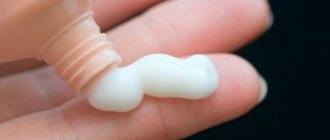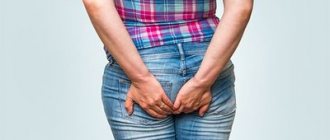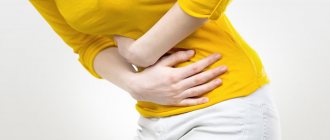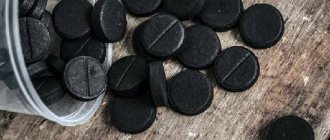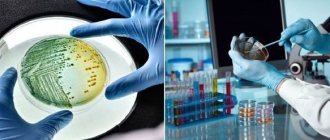Inflammation of hemorrhoids, dilation of the venous vessels of the rectum, fissures in the anus and painful symptoms of the disease cause the patient a lot of discomfort. All effective therapeutic actions are aimed primarily at relieving pain. In the chronic form, it is possible to treat with minimally invasive methods that eliminate the problem itself with a minimal percentage of relapse. Specialists have a good range of names of painkillers and anti-inflammatory drugs in their arsenal, the choice of which depends on the individual characteristics of the patient’s body.
Medicine for hemorrhoids
Of course, there is a cure for hemorrhoids.
Modern pharmacology offers us a wide range of different drugs, many of which are actively advertised in the media and via the Internet. These are various types of complex local preparations: ointments, gels, creams, rectal suppositories, microenemas. The active substances included in these medications help to significantly reduce and often completely relieve pain, inflammation and swelling of tissues, normalize blood circulation and promote the resorption of blood clots. There are a lot of similar drugs, as well as the substances that make up them. Each of them has some nuances, so you need to choose them very carefully. It is advisable to first consult with a proctologist before doing this.
Painkillers and laxatives for hemorrhoids
Ibuprofen is a pain reliever for hemorrhoids.
Painkillers for hemorrhoids are not prescribed in long courses. As a rule, they are prescribed in extreme cases to relieve acute pain.
They can be used for several days, but not for long. After 1-3 days of use, painkillers are replaced with combined suppositories and ointments with an anesthetic effect.
When taken over a long period of time, painkillers increase the risk of bleeding and reduce blood clotting.
When are anti-hemorrhoid medications effective?
Many coloproctologists recommend choosing ointments, gels and creams rather than suppositories as a cure for hemorrhoids, since they are practically useless for external hemorrhoids and ineffective for internal ones, since they most often penetrate too far up the upper intestine, bringing virtually no relief. It should be remembered that no medications, as a rule, radically cure the disease, since they do not get rid of the cause of the disease - hemorrhoids.
The medicine in this case will only relieve the symptoms and restrain the development of the disease, making life easier for the patient and allowing him to temporarily cope with the unpleasant manifestations of the disease. The same applies to various types of folk remedies.
Drug treatment is most effective in the early stages of the disease, when manifestations of the disease are minimal. If, after taking medications, you follow the doctor’s recommendations and carefully monitor your lifestyle, then further surgical treatment can be avoided. However, practice shows that no matter how good the medicine is, sooner or later it turns out to be an insufficient means of combating the disease and you have to turn to a specialist.
It is best to go for radical treatment as early as possible, because too much expectation from medications can lead to hemorrhoids entering a more serious phase or even leading to unpleasant complications and a very painful operation.
Effective drug treatment of hemorrhoids
Both women and men experience unpleasant symptoms of the disease equally. They can occur already in the first stages. The first “bells” may be a slight burning sensation in the anus, itching, discomfort and pain during bowel movements. Further, the painful sensations will only intensify, and bleeding may appear. During an exacerbation, dizziness, nausea and general malaise may occur. In the absence of proper treatment in the initial stages, hemorrhoids become chronic with periods of exacerbation and remission.
The symptoms of the acute phase of the disease can be relieved with the help of emergency therapy in the form of local products - gels, ointments and creams for external use to heal cracks and relieve swelling of the anus; rectal suppositories and suppositories that act on the tissue of the rectal mucosa; painkillers. When the first signs of inflammation of the hemorrhoids appear, you should immediately contact a proctologist to rule out other diagnoses and determine the stage of the disease.
Groups of painkillers for hemorrhoids
To treat hemorrhoidal “bumps,” a large number of herbal and synthetic drugs of various types are used, the names of which can be found in any pharmacy. Each group of drugs has its own indications for use, pharmacological effect and dynamics of effectiveness during the treatment process - how quickly and efficiently the drug can relieve pain from attacks of the disease.
The main list of the group includes the following names:
- Venotonics and phlebotonics - tablets increase vascular tone, improve blood microcirculation, and relieve symptoms of thrombosis. The most popular names of drugs in this group are “Phlebodia 600”, “Detralex”;
- Angioprotectors - act on damaged vessel walls, relieve inflammation and swelling, and promote effective tissue restoration of hemorrhoids. Popular drugs are Troxevasin and Ascorutin;
- Non-steroidal anti-inflammatory drugs - relieve inflammation, can relieve pain at any stage of the disease, even when cracks and tears appear in the nodes. This group includes Ketorolac, Nurofen, Ibuprofen;
- Antispasmodic drugs – relieve spasms and pain. The medicine relieves pain in the anus for a certain period and alleviates the patient’s condition. The most effective drug "No-Shpa";
- Anesthetic injections are one of the most potent groups of drugs that block pain. Injected into the anus or gluteal muscle. They are used in extreme cases when other medications do not help. Names of active drugs Lidocaine and Diclofenac;
- Preparations with herbal components are used in the initial stages of enlargement of hemorrhoidal “bumps”, when there are no complications in the form of anal fissures and regular bleeding. Basically, these are topical drugs.
Diet and normalization of stool
First of all, when treating hemorrhoids, it is necessary to normalize the stool and eliminate strong strain during bowel movements. Otherwise, during stool, blood will actively flow to the pelvic organs and internal hemorrhoids. The latter sharply increase in volume, which promotes the release of blood. To normalize stool, it is necessary to consume enough water and dietary fiber. Wheat (oat) bran is used as a source of dietary fiber. They can be taken during each meal, 2-3 tablespoons 3 times a day, scalded with boiling water. This is the substrate on the basis of which feces are “formed”. Vegetables, fruits, seaweed, flaxseed in their natural form or in the form of pharmacological preparations are useful. Also used are seeds and husks of plantain (mucofalk, phytomucil), which have a high water-holding capacity. Prunes, dried apricots, liquid oils (olive, sunflower), and boiled beets contribute to the relaxation.
To strengthen the mucous membrane, chamomile microenemas, a glass twice a day, and drinking rosehip decoction are useful. Going to the toilet should be daily, preferably in the morning, from 6 to 9 am. Often, just normalizing the stool stops the release of blood. Physical exercise and proper breathing (with the abdomen drawn in as you exhale) are useful. Drug therapy (laxatives, probiotics, etc.). Gastroenterologists can provide invaluable assistance to people in this regard.
Modern methods of treating hemorrhoids
Etiology
Hemorrhoids (from the Greek haimorrois) literally mean “bleeding.” This disease, known since time immemorial, is still explained ambiguously and sometimes contradictorily, which fully reflects the level of our knowledge about it. Most researchers recognize that the sources of bleeding are cavernous formations, which under normal conditions are formed during intrauterine development.
The first group of hemorrhoidal formations, the defeat of which leads to the formation of external hemorrhoids, is located at the exit from the anal canal, in the subcutaneous tissue.
The second group of cavernous formations, located in the submucosal layer of the rectum, above the dentate line, is the source of the development of internal hemorrhoids.
There are anastomoses between the external and internal cavernous formations, the functional purpose of which is not entirely clear, if only because with an increase in intra-abdominal pressure, as a rule, external rather than internal nodes thrombose. Along with the external and internal sphincter, the cavernous plexuses are part of the obturator apparatus of the rectum. Their ability to increase in volume due to filling with blood allows for an ideal sealing of the intestine. Indirect evidence of this assumption is the ordered arrangement of hemorrhoidal formations around the circumference of the intestine; it corresponds to 3, 7 and 11 o'clock. Unfortunately, this delicate mechanism is very vulnerable and there are many reasons for this. The immediate cause of hemorrhoids is a violation of the blood supply to the cavernous veins, which can be caused by increased arterial blood flow, but more often by a slowdown in venous outflow. The dilated vein forms a “bag of blood”, which is called a hemorrhoid. In recent years, much attention has been paid to studying the condition of the ligamentous apparatus of the submucosal layer of the rectum, the violation of which leads to the prolapse of internal hemorrhoids. Therefore, from the point of view of modern pathophysiology, both variants of the development of the disease should be considered not only as equivalent, but, possibly, as complementary.
Prevalence . Data on the prevalence of hemorrhoids are very contradictory; for example, in Russia this figure ranges from 130–145 cases per 1000 adults [1]. Statistical data provided by foreign researchers is only about 4.4% [2, 3]. The inconsistency of the indicators is most likely due to the difference between morbidity and negotiability, which is indirectly confirmed by data from examinations of US residents, which stated that 80% of people who had hemorrhoids did not complain [4].
Classification of hemorrhoids . The classification was proposed by the State Scientific Center of Coloproctology [1]. It includes the symptoms of the disease, its clinical manifestations and anatomical changes. According to the course of the disease, chronic and acute types of hemorrhoids are distinguished. In shape - internal, external, combined. The chronic course of internal hemorrhoids is divided into 4 stages. It should be emphasized that the clinical symptoms of the disease correspond to the morphological changes occurring in the longitudinal muscle, which fixes cavernous formations in the submucosal layer of the rectum.
In the first stage: bleeding and discomfort are clinically noted, hemorrhoids do not fall out of the anal canal, the vascular pattern of the mucous membrane is enhanced, anatomically - changes in the longitudinal muscle are insignificant.
In the second - bleeding, prolapse of nodes, itching, mucous discharge; prolapsed nodes are automatically reset into the anal canal; histologically in the fibromuscular framework there is unexpressed dystrophy, the number of elastic fibers predominates.
In the third - bleeding, prolapse of nodes, anal itching, mucous discharge. Prolapsed hemorrhoids require manual assistance to reposition them into the anal canal; At the same time, morphological changes in muscle tissue indicate a loss of elasticity, which proves the predominance of dystrophy processes.
In the fourth - bleeding, itching, discomfort, incontinence of the anal sphincter, severe pain; constant prolapse and inability to manually reduce hemorrhoids into the anal canal; which corresponds to complete degeneration of the fibromuscular framework that holds the nodes in the anal canal.
Complications of hemorrhoids . The most common complication of hemorrhoids is thrombosis of hemorrhoids. As a rule, the lesion occurs in the external nodes and quite often thrombosis is the first manifestation of the disease. Precipitating moments for the development of thrombosis most often include pregnancy, childbirth, long air travel, lifting heavy weights, and acute stool disorders. If patients seek help in the first 2 days from the onset of the disease, an enlarged bluish (at an early stage) hemorrhoid, covered with skin and partially mucous, is easily visually detected. More often, the appearance of a node is accompanied by pain, especially intense if two or more nodes are affected. If the size of the node is significant (usually more than 2 cm) with pronounced tension in the mucosal tissue, an area of necrosis appears on it; after rejection of the latter, bleeding develops, sometimes parts of the blood clot may partially come off and the size of the prolapsed formation may decrease significantly. The skin part of the node becomes swollen and hyperemic. Clinically, as a rule, in this case, the patient notes a decrease in pain. Digital examination should begin with examination of the wall of the anal canal opposite to the thrombosed node, which makes the examination more gentle. A digital examination can reveal signs of thrombosis of the internal hemorrhoid. Examination of the anal canal using instruments is carried out only by proctologists.
More rare complications include the formation of a hematoma with a sharp increase in pressure and damage to the wall of the venous vessel. If an internal hemorrhoid prolapses, it may become strangulated. If necrosis of the internal node occurs, massive bleeding is possible, so the patient should be shown to a proctologist. In the event of strangulation of several prolapsed nodes or the occurrence of stool disorders, a purulent process may occur in the perirectal tissue.
Differential diagnosis
Clinical manifestations of hemorrhoids do not differ in the specificity of symptoms. In case of acute hemorrhoids or its complications, these are acute paraproctitis, anal fissure, cryptitis, rectal prolapse. In the case of chronic hemorrhoids, the development of a tumor of the rectum or anal canal should first be excluded. The group of patients who have been suffering from hemorrhoids for a long time, who have come to us due to increased bleeding or unstable stools, is of particular concern in terms of oncological diseases. In case of any treatment of a patient with hemorrhoids to a therapist or general practitioner, it is necessary to refer him for a consultation with a proctologist.
Conservative treatment
The choice of treatment method is usually determined by the stage of the disease or the nature of the complications that have developed.
A special diet for patients with hemorrhoids is not required, except in certain cases. For thrombosis of hemorrhoids, a protein-vegetable diet with a high fiber content and the exclusion of fried and spicy foods, spices, and alcohol is recommended. In patients with concomitant diseases of the colon (irritable bowel syndrome, diverticular disease or nonspecific colitis), the diet should be aimed at normalizing stool. In case of thrombosis of hemorrhoids, accompanied by constipation, patients should be prescribed microenemas to cleanse the intestines. Patients leading a sedentary lifestyle, without exacerbation, should be recommended to play sports, with the exception of weightlifting and cycling. Patients should pay special attention to performing hygienic measures. During the acute period of the disease, it should be recommended to take a cool shower 2-3 times a day and always after stool, and it is necessary to wash not only the skin of the perineum and anus, but also the anal canal itself. In cases where water procedures are not available, the use of special wet sanitary napkins should be recommended.
Systemic drugs . In the conservative treatment of hemorrhoids, one of the leading roles belongs to drugs containing bioflavonoids (diosmin and hesperidin). The use of the latter in the treatment of hemorrhoids is traditional, but with the creation of modern biotechnologies it was possible to obtain Detralex, a micronized drug, which made it more bioavailable and increased the effectiveness of treatment by about 30%. Bioflavonoids have several properties: first of all, they are able to increase venous tone, enhance lymphatic drainage, reduce vascular fragility and improve microcirculation. First of all, the listed qualities make it necessary to use Detralex in the event of thrombosis of hemorrhoids. The drug is prescribed 2 tablets 3 times a day for the first four days, then 1 tablet 4 times for up to 7 days. In addition, Detralex is able to reduce and prevent the development of hemorrhoidal bleeding and exacerbation of hemorrhoids. For preventive purposes, it is recommended to take the drug for up to 6 months, 2 tablets per day. The use of micronized bioflavonoids (the source of which are natural sources, for example, red grape seeds) is possible even during pregnancy, although not for a long time (up to 7 days). The drug is well tolerated and rarely causes allergic reactions. To date, the drug “Phlebodia 600” has been successfully used, which has a prolonged effect, which allows it to be taken once a day. In patients with thrombosis of hemorrhoids, accompanied by severe pain, it is possible to use non-steroidal anti-inflammatory drugs and analgesics, but it is extremely difficult to assess the effectiveness of their effects, so the question of their use should be decided individually in each specific case.
Local therapy . Local treatment is prescribed to relieve inflammation and analgesia. Among the drugs of the first group, we can recommend Posterisan Forte ointment (or suppositories of a similar name). The drug contains a suspension of E. coli culture and hydrocortisone. E. coli metabolites can enhance local immune responses, accompanied by the release of cytokines, especially intraleukin-1. In addition, a suspension of bacterial culture causes the formation of specific immunoglobulin A, which forms a delicate film on the intestinal mucosa, acting as a local protective barrier. Hydrocortisone, which is the second component of the drug, helps to quickly suppress inflammation and accelerates the processes of tissue regeneration induced by a suspension of Escherichia coli culture. The drug is administered rectally 2 times a day; in case of severe inflammatory process, for example, in patients with nonspecific colitis, the frequency of administration can be increased taking into account the frequency of stool. The maximum duration of treatment does not exceed three weeks. If it is necessary to continue therapy, it is possible to use Posterizan suppositories or ointments containing exclusively a suspension of bacterial culture.
Among the drugs that have a complex effect, we recommend Relief Advance suppositories. The composition includes 10% benzocaine, which has a rapid analgesic effect, in addition, shark liver oil containing fat-soluble vitamins, free fatty acids, squalene and alkylglycerol, which are powerful reparants, which allows them to be recommended even for use in the postoperative period in patients who underwent surgery for hemorrhoids. The frequency of administration is 3–5 times a day. The drug is highly effective, well tolerated and rarely produces adverse reactions.
Surgical treatment of hemorrhoids
External hemorrhoids . In addition to conservative treatment of thrombosed hemorrhoids in the first 24–48 hours, until inflammatory changes in the skin part of the node occur, surgical intervention is possible. It is usually performed under local anesthesia and involves removing the hematoma or thrombotic masses, although there is an opinion that it is necessary to remove the entire node along with the affected vein [5]. This tactic is justified in the presence of one (less often two) large nodes or in severe pain. Unfortunately, such operations can not be performed often, because the majority of patients consult a doctor already in the presence of severe inflammation, which sharply intensifies the pain syndrome that existed until that moment. Surgical removal of large external nodes is justified in case of difficulties arising with hygiene, persistent anal itching or after previous thrombosis, although in recent years many patients have turned to a proctologist for aesthetic reasons.
Internal hemorrhoids . Currently, there is a fairly large selection of minimally invasive treatments, used mainly for isolated internal hemorrhoids of stages I–II. True, sometimes the indications for their use can be expanded, mainly in elderly and senile people with severe concomitant diseases. Minimally invasive interventions include: infrared photocoagulation, latex ring ligation and, finally, transanal ligation under Doppler control. The first two of these methods have long been used in clinical practice, and their strengths and weaknesses are well known, so we will dwell in more detail on the last method.
Ligation of hemorrhoidal arteries under Doppler control . The essence of the method is based on the fact that Doppler examination reveals the distal branches of the superior hemorrhoidal artery, supplying blood to the internal hemorrhoids. The necessary equipment is an electronic unit and an anoscope with a Doppler sensor. The method can be used for stages I–III of the disease. The procedure can be carried out in a hospital within one day. The procedure lasts 20–40 minutes, does not require general anesthesia, restrictions on physical activity for about two weeks. Temporary disability is not required for patients. There are no problems with stool in the early postoperative period.
Operation Longo . Prolapse of the mucous membrane of the anal canal with internal hemorrhoidal plexuses, caused by damage to the muscular and ligamentous apparatus of the latter, is accompanied by a disruption of their blood supply and a change in the anatomical relationships between the external and internal nodes. This prerequisite served as the basis for the creation of the Longo operation, which involves tightening the prolapsed mucosa, restoring the anatomical position of the hemorrhoidal plexuses and normalizing their blood flow. The Longo method has been used in clinical practice since 1993, in our country for the last 5 years. The intervention is performed with a disposable set of instruments. The operation is indicated for stages II–IV of hemorrhoids. In our opinion, the advantages of this procedure are most convincing for circular prolapse of nodes. The operation can be performed under conduction or local anesthesia.
Advantages of the method; the duration of the operation is 10–20 minutes, the hospitalization period does not exceed one day, the pain syndrome is well relieved without the use of narcotic analgesics, there is no need for dressings, the patient can return to work in 5–10 days.
Bipolar coagulation of hemorrhoids using the LigaSure device . A modern alternative to classical hemorrhoidectomy is the method of bipolar coagulation of hemorrhoids, which is successfully used in stages III–IV of the disease. The method is based on the principle of bipolar coagulation using a modernized generator equipped with a feedback unit that allows tissue differentiation. In this case, the usual burn of the tissue does not occur, but welding occurs due to the polymerization of its own collagen and instead of the usual scab, the wound is covered with a collagen film. The intervention can be performed under spinal or epidural anesthesia. The intervention technique is simple. The reliability of polymerization guaranteed by the method makes it possible to coagulate vessels up to 7 mm in diameter. The duration of the operation is about 20 minutes. The duration of postoperative treatment is determined by the size of the wound defects of the anal canal. Pain syndrome in the postoperative period is less pronounced than during traditional surgery.
Literature
- Vorobyov G.I., Shelygin Yu.A., Blagodarny L.A. Hemorrhoids. M.: Publishing house "Mitra-Press", 2002. 192 p.
- Johanson JF, Sonnenberg A. The prevalence of hemmhoroids and chronic constipation // Gastroenterology. 1990, 98; 380–386.
- Bayer I., Myslovaty B., Picovsky BM Rubber Band ligation of hemorrhoids: covenient and economic treatment // J. Clin. Gastroentrol. 1966; 23:50–52.
- Haas PA, Haas GP, Schmaltz S., Fox TA Jr. The prevalence of hemorrhoids // Dis. Colon Rectum. 1983; 29: 435–439.
- Corman MI Colon and Rectum surgery, 3rd ed.Philadelphia, Pa: JB Lippincott. 1993: 54–115.
K. E. Mayat , Candidate of Medical Sciences European Medical Center , Moscow
The effectiveness of conservative therapy
But you need to understand that traditional and non-traditional methods do not get rid of the basis of the disease, the hemorrhoids themselves. The latter, under the influence of treatment, are somewhat “strengthened”, blood discharge decreases, but over time everything returns to normal. The patients themselves speak about this - “old-timers from hemorrhoids”, who have been trying to get rid of hemorrhoids by various means for decades. Conservative therapy is effective mainly in the early stages of the disease. It is also necessary when preparing patients for surgical treatment, in the postoperative period, and finally, when radical treatment is delayed for one reason or another.
Symptoms of the disease and causes of its occurrence
Hemorrhoids can be both internal and external.
Bleeding is the main symptom of hemorrhoids. In the first stages of the disease or in cases where it is not marked by special complications, patients may notice only small traces of blood on hygiene items or bloody streaks in the stool. As the pathology develops, a person begins to deal with increasingly severe hemorrhages during bowel movements. Often bleeding has the following characteristics:
- the bright red color of the secreted blood, and the process itself does not cause discomfort or pain, so it may be quite unexpected for the patient
- going to the toilet is constantly accompanied by bleeding
- The discharge of blood can be quite strong. In such cases, the patient may have the appearance of a stream and this negatively affects the person’s condition in general: fatigue, weakness, and dizziness occur.
- bleeding may be small and appear only with constipation or dietary irregularities
Cases in which bleeding often occurs:
- constipation (hard feces damage the nodes, resulting in the appearance of blood)
- chronic hemorrhoids, which are accompanied by a large size and number of hemorrhoids
- pushing during childbirth
- diarrhea
How to stop bleeding
Relief Advance is an excellent suppository for hemorrhoids.
Stopping bleeding from hemorrhoids is an important matter that should not be put off. Also, do not forget that the mere fact of stopping hemorrhoidal bleeding is not at all a reason for refusing to seek help from a doctor. The most common over-the-counter drug that is effective only for very small bleeding is the drug Vikasol. If the problem does not stop within half an hour, you should apply ice and contact an ambulance. There are also several ways to combat bleeding using traditional medicine:
- calendula tincture lotions
- microenemas consisting of blueberry decoction, calendula tincture, wheatgrass rhizome and one percent tannin solution
- garlic steam
- candles made from infusions of medicinal herbs
Preventive measures that reduce the risk of problems occurring during bowel movements:
- special diet
- performing various exercises and playing sports
- use of hard furniture
- weight control
- washing with cold water after defecation
Hemorrhoidal bleeding is a symptom of hemorrhoids that appears as a result of damage to hemorrhoids - seals formed on the surface of the rectum. There are many methods to stop bleeding, but only a specialist can truly cure this disease. The doctor will prescribe a diet, necessary exercises and other measures to combat bleeding from hemorrhoids.
Hemostatic suppositories and tips on the correct use of suppositories
Potato suppositories are effective for hemorrhoids.
Traditional methods of treating hemorrhoids are a quite popular and relevant topic, since some people are embarrassed to admit to this disease. Often patients keep silent about the fact of hemorrhoids and carry out treatment on their own. It is important to remember: traditional medicine is an unreliable method of therapy; they do not fight the cause of the disease, but only reduce the symptoms. Simply put, recovery using only alternative methods is possible only in some cases, but no one denies their effectiveness when used in an integrated approach along with standard treatment prescribed by a qualified specialist. Potato-based suppositories to stop bleeding are considered very popular and easy to prepare. A suppository of the same shape as a suppository sold in a pharmacy is cut out of a clean, peeled potato, after which vegetable oil is applied to it and before going to bed, it is inserted into the anus, leaving it there all night.
The remains of such a suppository will come out in the morning without outside help during bowel movements. Before using such a suppository, you must first cleanse the intestines and wash the perianal folds thoroughly. Using honey and propolis, you can make extremely effective suppositories for the treatment of hemorrhoids with bleeding; there are even ready-made medicines based on these components on pharmacy shelves. To make them yourself, you should use candied honey, diluting it with propolis to a viscous consistency. Then you need to form a candle from this mass, and for greater convenience, you can freeze it a little. Before inserting suppositories made in this way, it is necessary to treat the perianal folds with vegetable oil, for example, sea buckthorn.


